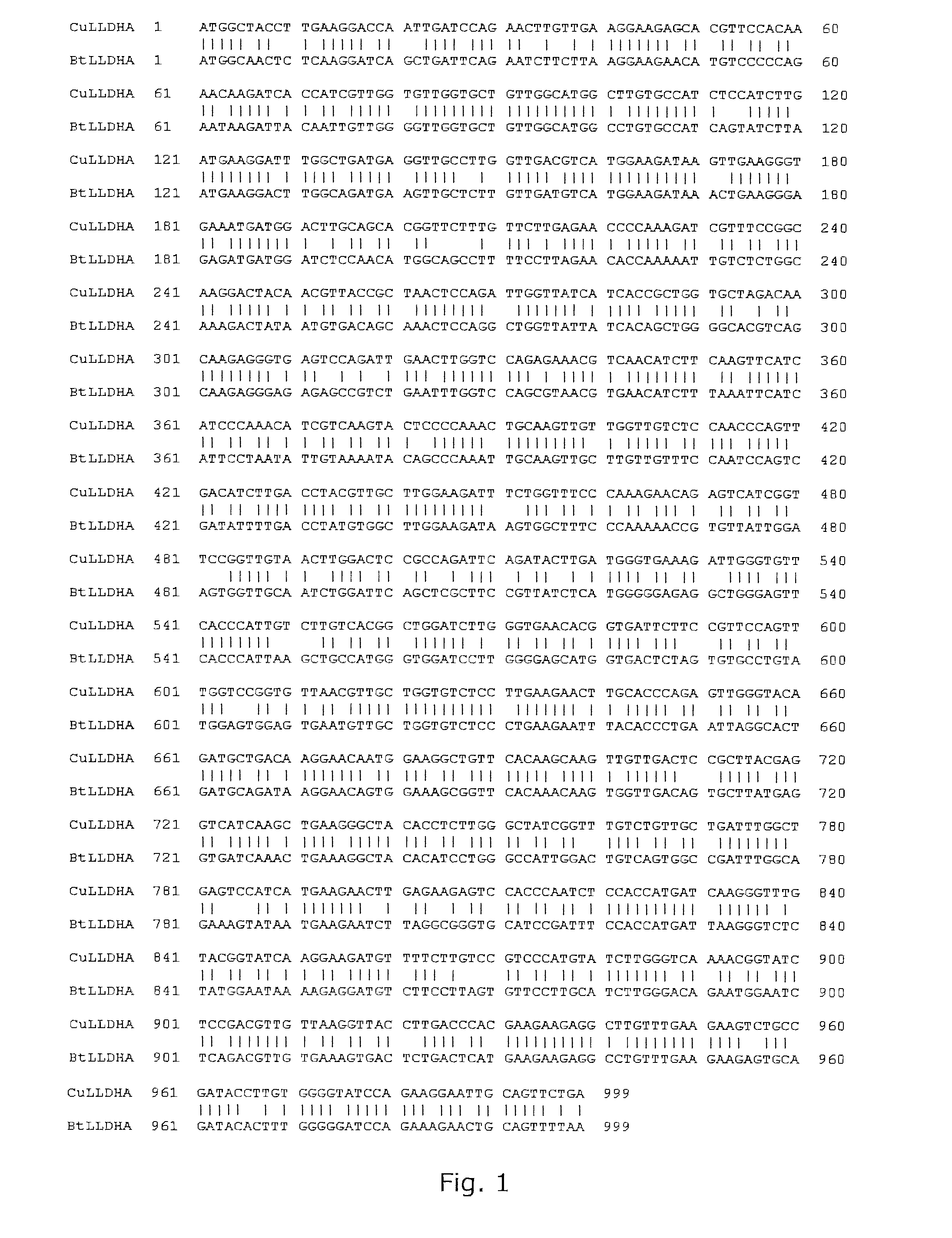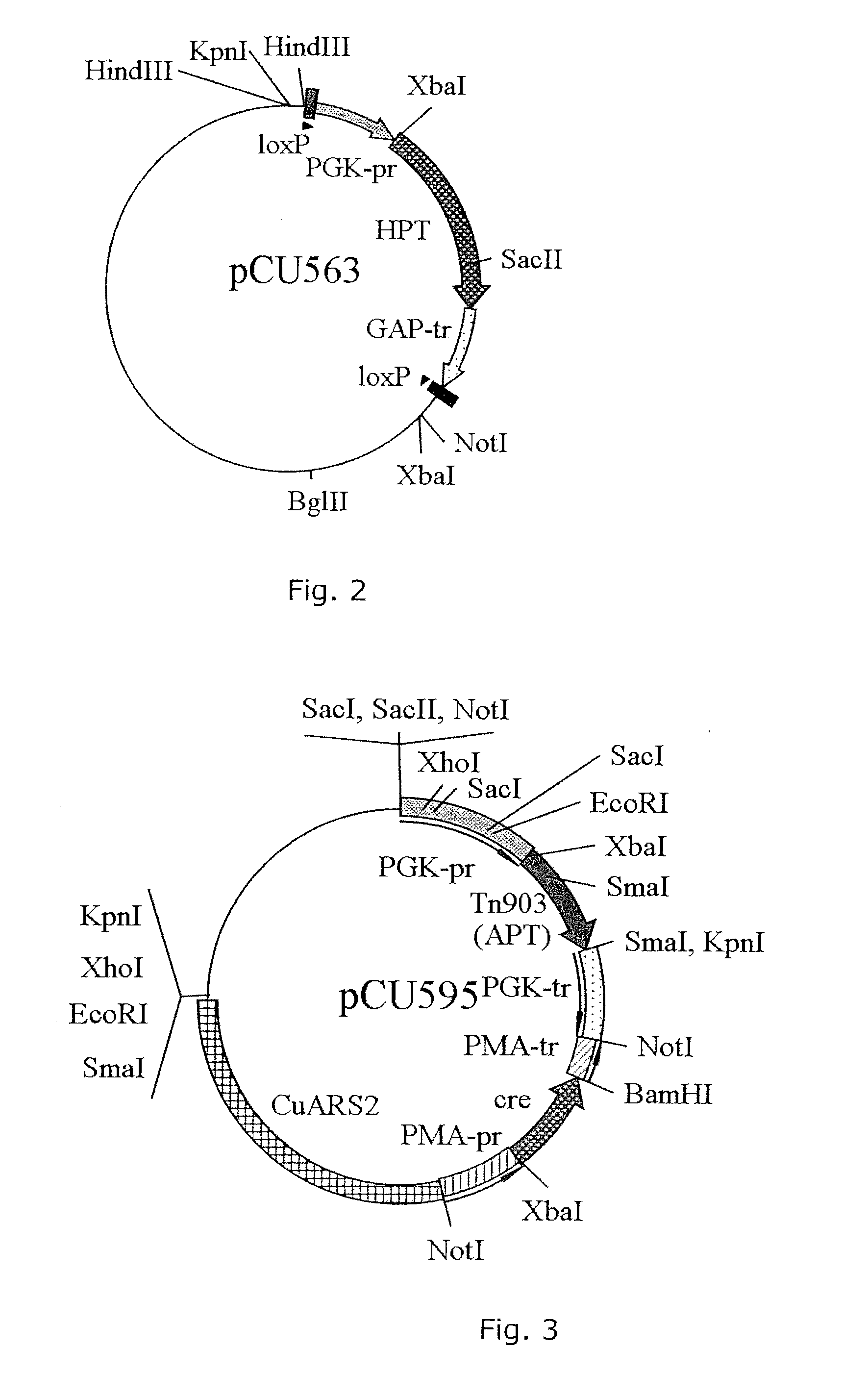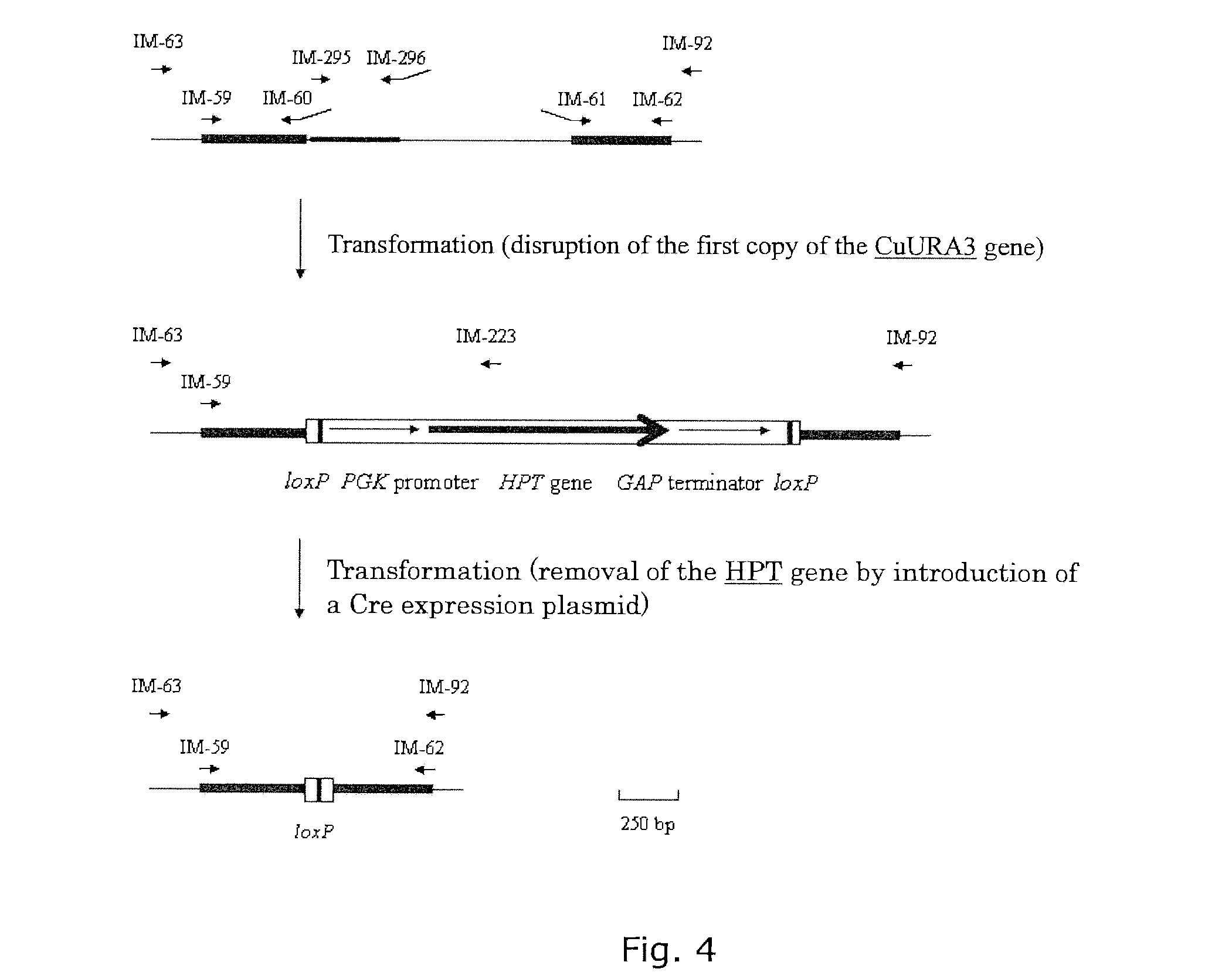Method for highly efficient production of lactic acid using candida utilis
a technology of lactic acid and candida, which is applied in the field of producing lactic acid, can solve the problems of low lactic acid production efficiency, long fermentation time in a stirred fermentation tank, and the negative effect of simultaneously suppressing cell proliferation, so as to achieve efficient lactic acid production and short fermentation time, the effect of improving the efficiency of lactic acid production
- Summary
- Abstract
- Description
- Claims
- Application Information
AI Technical Summary
Benefits of technology
Problems solved by technology
Method used
Image
Examples
example 1
Development of a Candida utilis Transformation System which Utilizes the Cre-loxP System
[0101]1-1. Construction of a Plasmid Required in a Multiple Transformation System which Utilizes the Cre-lox System
[0102]pCU563, a plasmid to prepare a DNA fragment for gene disruption, was constructed according to the following procedure. Using as a template the plasmid pGKHPT1 described in Shimada et al. (Appl. Environ. Microbiol. 64, 2676-2680), which carries the PGK gene promoter and the HPT gene (hygromycin-resistant gene), PCR (extension reaction: 1.5 minutes) was performed with a primer set of IM-53 (SEQ ID NO:16) and IM-57 (SEQ ID NO:17) to amplify a DNA fragment consisting of, in sequence, loxP (SEQ ID NO:18), the PGK gene promoter, and the HPT gene. In addition, using pGAPPT10 (Kondo et al., Nat. Biotechnol. 15, 453-457) as a template, PCR (extension reaction: 30 seconds) was performed with a primer set of IM-54 (SEQ ID NO:19) and IM-55 (SEQ ID NO:20) to amplify a DNA fragment that cons...
example 2
Construction of a PDC-Encoding Gene Disrupted Strain
2-1. Cloning of the PDC-Encoding Gene
[0128]Primers IKSM-29 (SEQ ID NO:1) and IKSM-30 (SEQ ID NO:2) that amplify the base sequence on the side of C-terminus, which contains many common sequences of ScPDC1 gene, KIPDC1 gene etc., were made and subjected to PCR with the genome of the NBRC 0988 strain as a template (extension time: 30 seconds). When the sequence of the amplified DNA fragment of about 220 by (base pairs) (hereinafter referred to as Cup-Fg) was read (SEQ ID NO:3), it was found to be highly homologous to the ScPDC1 gene. This DNA fragment was thus considered part of a PDC-encoding gene.
[0129]Using this DNA fragment as a probe, Southern analysis was performed. First, genomic DNA extracted from the Saccharomyces cerevisiae S288C strain (the NBRC 1136 strain) was digested with HindIII, and genomic DNA extracted from Candida utilis NBRC 0988 was digested with XbaI, HindIII, BglII, ExoRI, BamHI, and PstI. These were then subje...
example 3
Construction of the Candida utilis Strain into which the L-LDH Gene has been Introduced
[0169]3-1. Design of the DNA Sequence of the L-LDH Gene which Encodes a Polypeptide having the Activity of L-lactate Dehydrogenase
[0170]In order to efficiently express a polypeptide having the activity of L-lactate dehydrogenase derived from bovine, a higher eukaryote, in the yeast Candida utilis, the design and synthesis of a novel gene sequence which does not exist in nature were requested to Takara Bio with the following items as design guidelines with regard to the gene described in Japanese Patent Laid-Open Publication No. 2003-259878 which encodes a polypeptide having the activity of lactate dehydrogenase as set forth in a bovine-derived enzyme's amino acid sequence (DDBJ / EMBL / GenBank Accession number: AAI46211.1).[0171](A) Codons that are frequently used in Candida utilis were used.[0172](B) mRNA instability sequences and repeated sequences were eliminated as much as possible.[0173](C) Vari...
PUM
 Login to View More
Login to View More Abstract
Description
Claims
Application Information
 Login to View More
Login to View More - R&D
- Intellectual Property
- Life Sciences
- Materials
- Tech Scout
- Unparalleled Data Quality
- Higher Quality Content
- 60% Fewer Hallucinations
Browse by: Latest US Patents, China's latest patents, Technical Efficacy Thesaurus, Application Domain, Technology Topic, Popular Technical Reports.
© 2025 PatSnap. All rights reserved.Legal|Privacy policy|Modern Slavery Act Transparency Statement|Sitemap|About US| Contact US: help@patsnap.com



